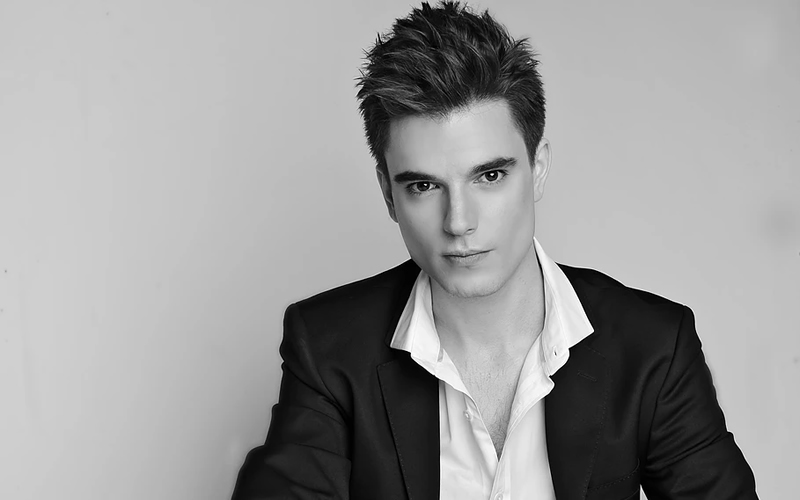St. Stephen’s Episcopal Church has one of the stronger music recital series in the Triangle. It doesn’t hurt that it can call upon the talents of such native sons as the internationally successful pianist Andrew Tyson. The church’s fine acoustics are ideal for chamber music or keyboard recitals. There’s nothing like basking in great musical works facing modern stained glass lit by the afternoon sun! Extensive in-depth program notes were by Joseph Kitchen. Tyson delivered the succinct pre-concert program by blending comments with keyboard examples, such as the tiny motives used in the sole twentieth-century selection.
Alban Berg (1885-1935) composed his single movement Piano Sonata, Op. 1 (1910) while studying with Arnold Schönberg. While it eschews strict 12-tone serial technique, it “hovers on the edge of tonality.” Berg uses Schönberg’s “developing variation” by deriving the whole piece by constantly varying the three tiny motives that appear in the opening.
Tyson’s pre-concert demonstration of the three key motives and a sample of how Berg treated them was invaluable for following these sounds as they were woven and twisted through the complex chromaticism, cyclic tonal patterns, whole-tone scales, and chromatic progressions. He brought out the work’s contained passionate intensity as well as its tonal beauty.
Waggish fare came next in the form of the three-movement Napoli Suite (1925) by Francis Poulenc (1889-1963). Inspired by a visit to Italy in 1922, the first two movements, “Barcarolle” and “Nocturne,” are lyrical while the third, “Caprice italien,” is an ebullient showpiece evoking urban bustle. Tyson wove seamless singing lines in the first two movements while giving full value to Poulenc’s insouciance and playfulness in the finale.
Tyson won early acclaim for his interpretation of works by Frédéric Chopin (1810-49). His selection of four works gave him ample scope to reveal his range. Neither unusual rhythmic patterns nor a middle section setting the hands against one another in conflicting rhythms kept Tyson from a sophisticated, masterful interpretation of Nocturne in F-sharp, Op. 15, No. 2. Both Mazurka in F minor, Op. 63, No. 2 and Mazurka in C minor, Op. 56, No. 3 were given lovely performances. Tyson brought out all the narrative power and dramatic contrasts in the spectacular Ballade No. 4 in F minor, Op. 52.
The concert ended with Tyson’s breathtaking performance of Franz Schubert’s penultimate sonata, the Sonata in A, D. 959 (1828). He played as if transported, at one with the ebb and flow of this work. The power of the opening Allegro’s heroic struggle was fully conveyed. How dramatic was the juxtaposition of the hushed simplicity of the Andantino’s melody against the sudden ff outburst! There was an underlying unease beneath the playfulness of the Scherzo. Both it and the opening movement involved extensive amounts of cross-hands. The memorable theme of the Rondo was spun out seamlessly before getting a number of key transformations. Tyson’s ability to weld an overall concept of these four movements was richly satisfying.
Repeated recalls by the audience’s standing ovation were rewarded by a gorgeous performance of Domenico Scarlatti’s Sonata in A minor, K. 9 with its insistent, repeated treble trill.













